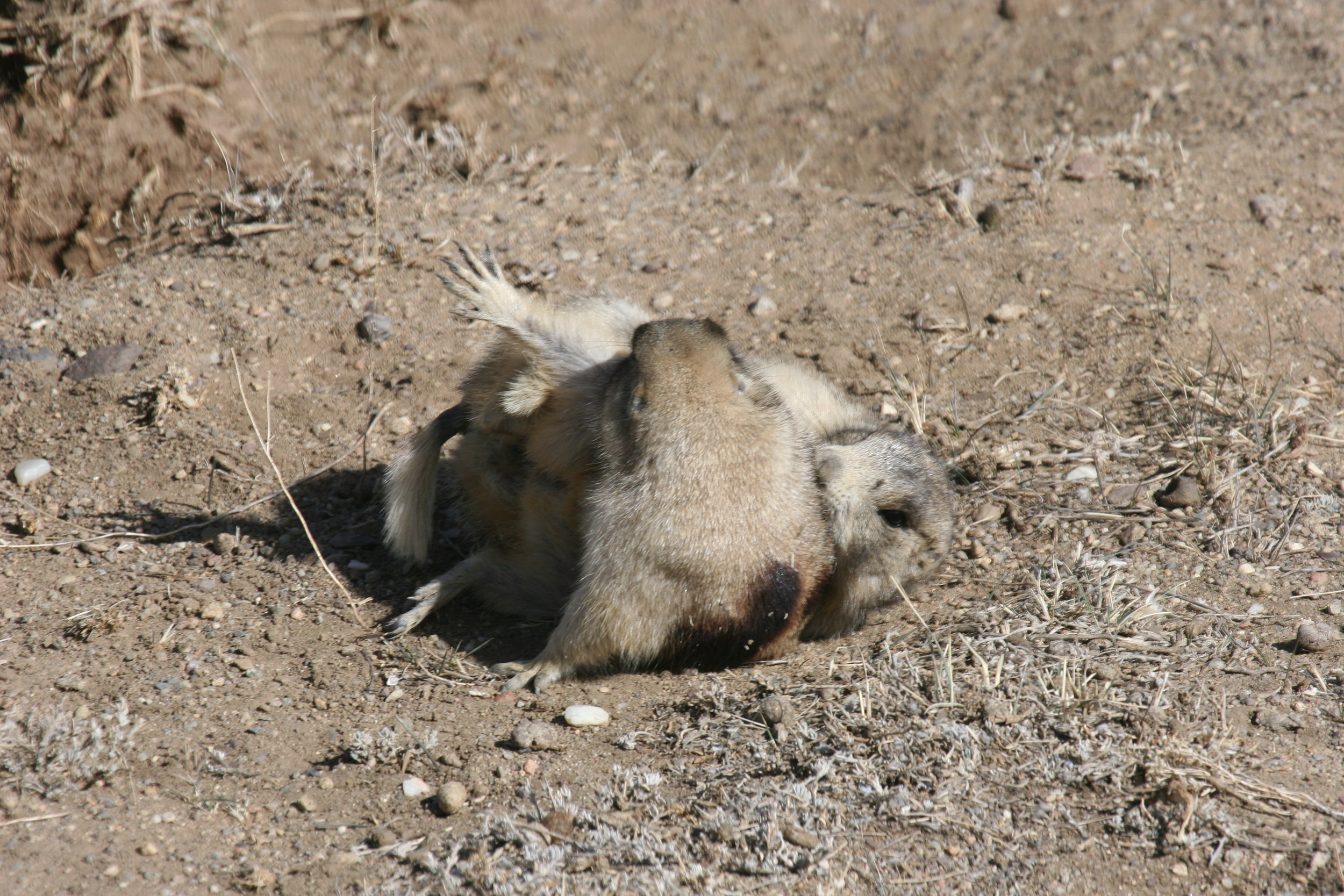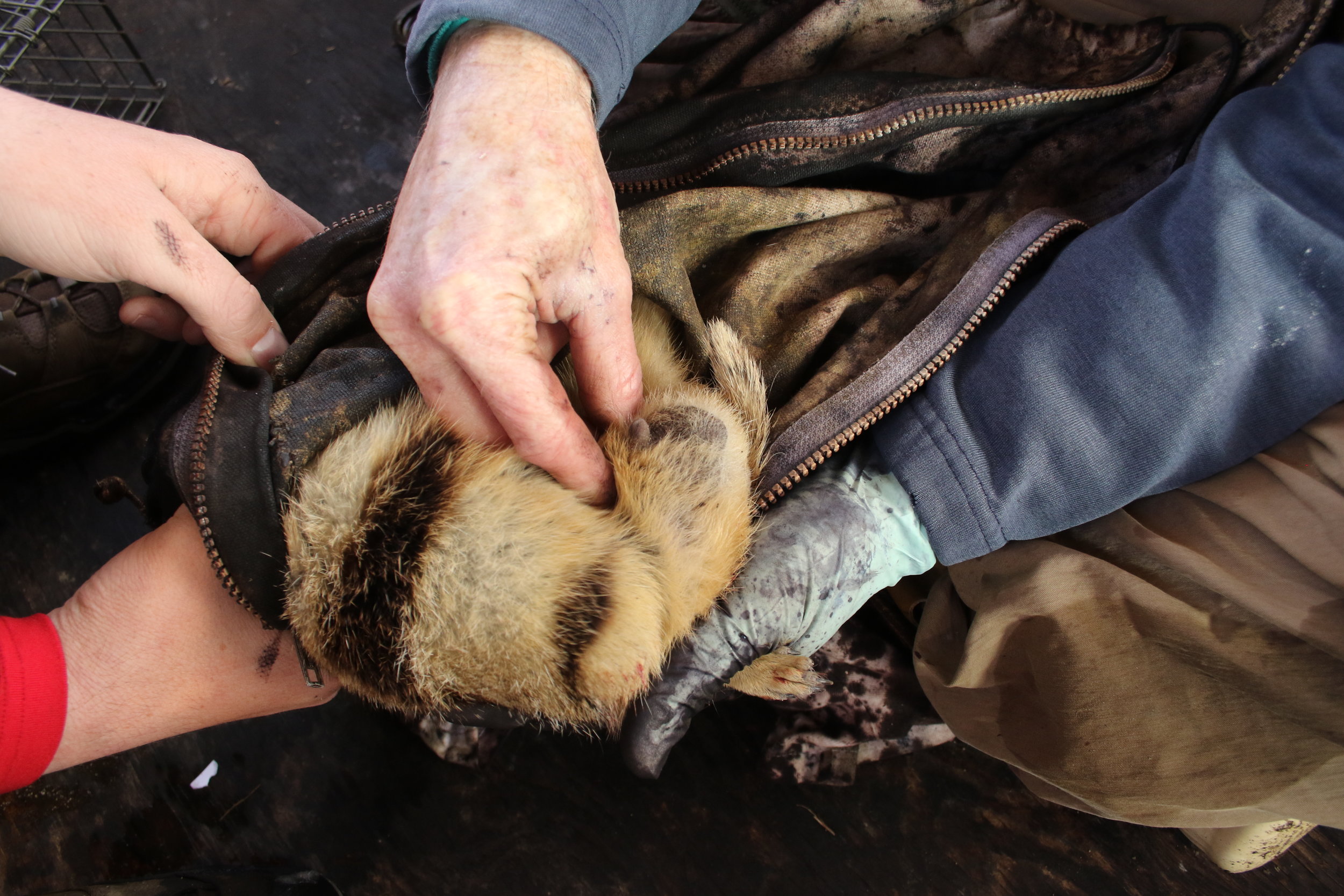THE MATING SYSTEM
Mates as A Resource
The mating season is perhaps the most dramatic time in a prairie dog colony, lasting 2-3 weeks in the early spring, starting around late March give or take depending on the species. During that time, each female goes into estrus (and is sexually receptive) for only a single day, and usually only a few hours of that day. Because territoriality reaches a fever pitch during this time, males become not only remarkably active but also exceedingly aggressive toward each other.
Mates are a resource, as much as food, water, and space. As such, there is inherent high-stakes competition for mates. The dominant male of a coterie/clan/territory will run off, dispute with, and often fight violently with other males in the area and invading males searching for estrous females.












































POLYGYNY
As part of their genus-wide template, prairie dogs exhibit a harem-polygynous mating system, wherein a single dominant male has exclusive access to a group of reproductive females and will copulate with multiple females in a single mating season. Coteries or clans contain one or two dominant males, a number of yearling males, and a majority of females. All of these members are kin (blood relatives) except for the dominant male(s), who would have been born in another territory and dispersed. Black-tailed prairie dog females uniquely do not mate in their first year, but in the other species, most yearling females do go into estrus and will mate in their first year. The yearling males do not typically breed, and will disperse before they become sexually mature (to avoid breeding with kin).
POLYANDRY
What really ups the drama for breeding prairie dogs atop of harem-polygynous territoriality is the additional practice of polyandry in females, wherein a single female will mate with two or more males over a single period of receptivity. For the males, while it is one thing to prevent competitors from accessing your harem of females, it becomes even more difficult when the female you’ve just copulated with is openly seeking more mates. The episode that plays before our eyes, then, becomes a flurry of possessiveness as the first male works to keep a non-cooperating estrous female segregated from the rest of the population (sometimes even herding her into her burrow and keeping her there). The estrous female, in turn, will typically mate with any other male who can get to her (or to whom she can get herself). This means the first male must juggle exerting control over a wandering estrous female with establishing dominance over seeking males and driving them away.
By the end of the day, a good number of females will indeed have mated with two or more males; and the mating female will remain aboveground later in the evening than all non-estrous females in an effort to maximize her chances of copulating again. Her first mate, who has been attempting to drive off competitors all day, will also remain aboveground later than most, with little rest from all sides.
Read John’s paper on polyandry to learn more, also accessible on our PUBLICATIONS page.
©MRR 2017
The mating season can be stressful for all prairie dogs, and succeeding despite the odds is critical for everyone. Every copulation is vitally important, and both males and females are seeking as many couplings as possible. Unlike highly-fecund rodents such as mice with multiple estrus periods over months, prairie dogs have an extremely narrow window in which to successfully breed and rear a single brood a year. They are not high reproducers, and so must take advantage of strategies like polygyny and polyandry to maximize their chances of cultivating a healthy and populous next generation.
